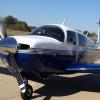A 231 question
-
Members Online
- toto
- TCC
- Sabremech
- navysix
- McMooney
- RescueMunchkin
- Jbguns24
- PT20J
- PeteMc
- Pierre07
- PaulS
- MikeOH
- Brandt
- Glen Davis
- dkkim73
- Ragsf15e
- alextstone
- bcg
- 201er
- KB4
- 802flyer
- Mac80
- StevenL757
- kortopates
- M20R
- Scott Ashton
- Jetpilot86
- N201MKTurbo
- marcusku
- Brad B
- Captainhog
- Gramps
- clh
- EricJ
- Marc_B
- M20E for me
- hammdo
- ottorecker
- DonMuncy
- Mamkeci


Recommended Posts
Join the conversation
You can post now and register later. If you have an account, sign in now to post with your account.